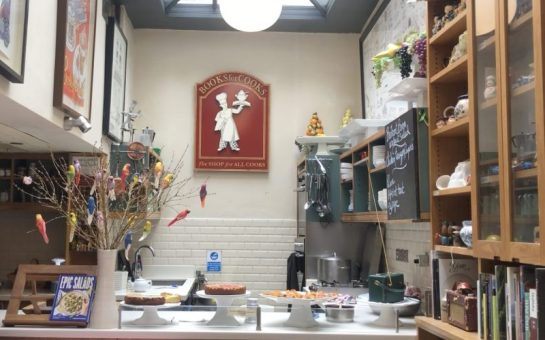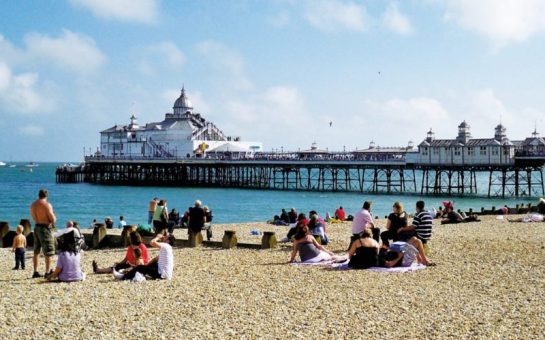When Julia Klein moved into a flat in Notting Hill with her newborn, paint was peeling off on the ceiling, the doorframe and behind the radiators.
After reading about the dangers of lead paint online, Julia tested the peeling paint and found that it contained lead.
According to the World Health Organisation, there is no safe level of lead exposure.
Lead levels can build up in a variety of ways, including through breathing in particles of lead paint, drinking water from lead pipes or eating animals shot with lead bullets.
Julia said: “Thank god I managed to stop my son from being poisoned because I was worried very early on.
“But I avoided it by being hysterical half of the time, which is not good because I should feel safe at home, my child should be able to run around and play with things.
“Once he got to the stage where he was crawling I was constantly paranoid, I wouldn’t let him just wander around the flat, I wouldn’t let him near the heaters.”
Lead is particularly dangerous for children as they absorb four to five times as much ingested lead as adults.
The other most vulnerable group is pregnant women, who can pass along high lead levels to their unborn children, stunting their development.
Senior Research Fellow at the University of Bristol Caroline Taylor analysed data collected on children’s lead levels in the UK in the mid-1990s.
Taylor said: “In children, higher blood lead levels were associated with poorer SATs results in reading, writing and spelling and with antisocial behaviour, even when taking into account other factors that might influence these outcomes.”
Little academic research about lead levels in the UK has been published since the 1990s, however every four years, the National Screening Committee (NSC) reviews whether to screen for lead levels, with the next review scheduled for 2021/22.
Once lead gets into the body it is nearly impossible to remove.
Treatments for lead poisoning are only used for very severe exposures because they often have serious side effects.
In the past, the NSC has recommended against screening for lead levels on the basis that the number of children affected is not known and treatments are often harmful.
However, since lead accumulates in the bones and teeth over time, identifying the source of lead exposure and removing it can save people from building up even higher lead levels.
Taylor said: “We know very, very little about what people’s blood lead levels are in the UK, and because we now know that there are effects at all levels of lead exposure, we should really know what exposures our children are having.
“It worries me quite a lot, because we just don’t know, and I think there’s a lot of complacency. There’s data from other countries which shows potential harms, and I think it would just be a good thing to know.”
In the UK, landlords are not legally obliged to disclose whether a building they are renting or selling contains lead paint.
Once Julia moved out of her flat in Notting Hill, she attempted to assess whether prospective flats had lead paint.
She said: “It’s very difficult to rent as a single mother. I would ask, for example, ‘Are these windows original?’ and they would look at me like: ‘Oh god, she’s going to be a nightmare.’ I basically moved to another country to be able to move into a new build that I could afford.”

From 1963 onwards, UK manufacturers labelled paints containing lead with the warning ‘do not apply on surfaces which might be chewed by children.’
However, lead paint was only comprehensively banned in 1992.
Director of Heritage Testing Hesaan Sheridan, who analyses historic building materials, said: “There isn’t a hard and fast rule to say this building is a particular age, so I can guarantee there’s no lead paint in it.
“A 1970s house is unlikely to have it on surfaces accessible by children, but the primer may contain lead because primer is designed to be overpainted.”
Lead paint can be removed in a variety of ways, including through laser, infrared or cryogenic removal.
However, painting over it is the cheapest option, as lead paint is only dangerous when it is peeling off and emitting lead particles into the air.
Sheridan emphasised that dry sanding is not a safe option, as lead particles come out of the front of the sander and linger in the home.
He said: “I strongly believe that the acute poisoning events based around refurbishing homes are widespread.
“Over the years I’ve been aware that there’s a growing problem with contractors just going in with power sanders and contaminating people’s homes.
“The trouble with risk assessment is that it’s all about protecting your workers, not the end user. So you protect your workers but you leave the whole place contaminated.”
Sheridan mentioned the boom in DIY projects during lockdown as a cause for concern, and suggested that warnings about lead paint should be put on products such as sandpaper.
Both Taylor and Sheridan said that there needs to be more public health information about how to avoid lead exposure, and more data on what people’s levels of exposure are.




